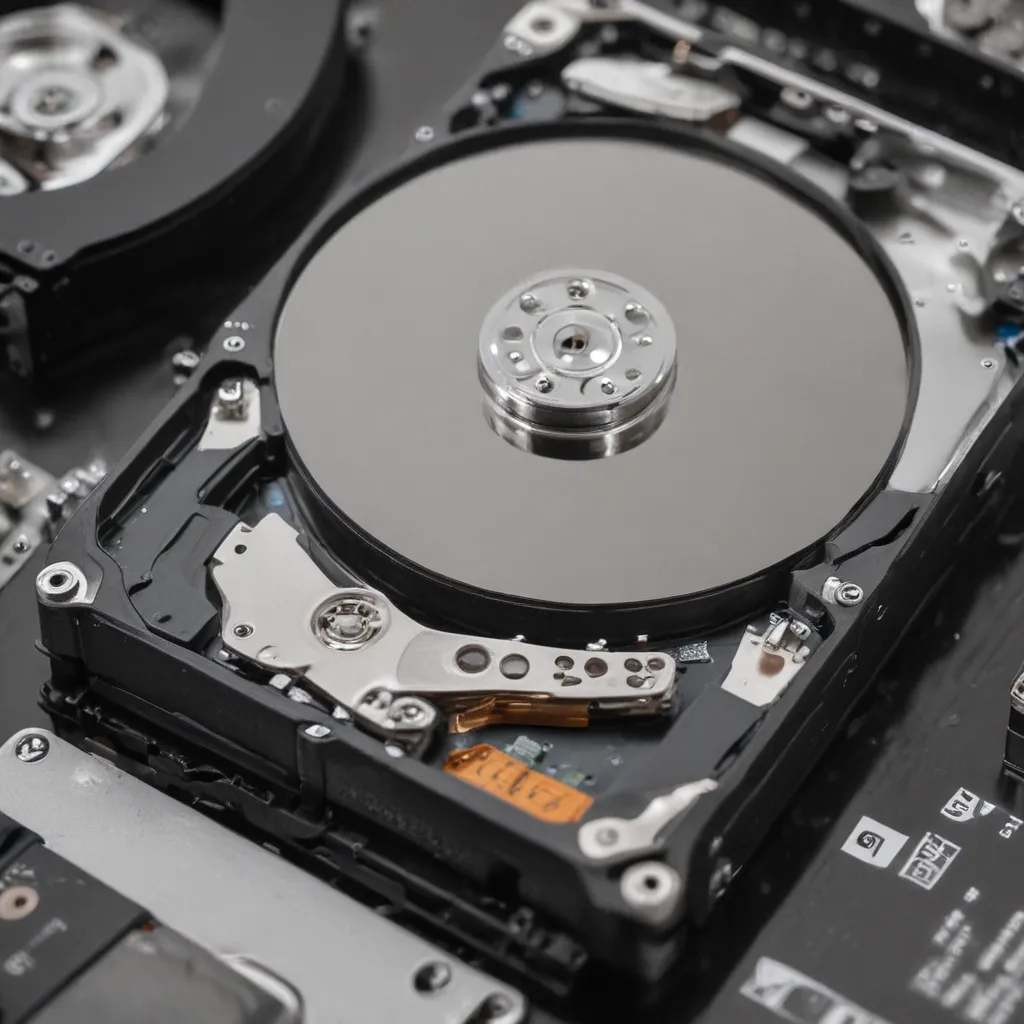Uncovering the Secrets of Your Hard Drive’s Health
As a computer repair technician in the UK, I’ve seen my fair share of hard drive failures over the years. It’s always a stressful situation when a customer comes in, panicked about losing their precious data. But fear not, my friends! With the power of S.M.A.R.T. (Self-Monitoring, Analysis, and Reporting Technology) testing, we can identify those pesky drive failures before they become a catastrophe.
Unlocking the S.M.A.R.T. Secrets
Now, I know what you’re thinking – “S.M.A.R.T.? Sounds like something straight out of a sci-fi movie!” But fear not, dear readers, this technology is very much a reality, and it’s been around for quite some time. In fact, S.M.A.R.T. has been a built-in feature of hard drives since the late 1990s [1].
So, what exactly is S.M.A.R.T., you ask? Well, it’s a monitoring system that keeps a watchful eye on various aspects of your hard drive’s health, from the number of read/write errors to the drive’s temperature and spin-up time. And the best part? It can often give you advance warning of an impending drive failure, giving you enough time to back up your data and replace the troublesome drive [2].
Putting S.M.A.R.T. to the Test
Now, I know what you’re thinking – “That’s all well and good, but how do I actually use this S.M.A.R.T. thing?” Well, my friends, let me tell you, it’s easier than you might think.
First and foremost, you’ll want to make sure that S.M.A.R.T. is enabled on your hard drive. This is usually the default setting, but it’s always good to double-check. Once that’s taken care of, you can use a variety of tools to run a S.M.A.R.T. test on your drive.
One of my personal favorites is the command-line tool smartctl. This little gem can give you a wealth of information about your drive’s health, including its overall status, temperature, and even the number of reallocated sectors (a telltale sign of impending doom) [3]. And the best part? It works on just about any operating system, from Windows to Linux to macOS.
But if you’re not a command-line aficionado, don’t worry – there are plenty of graphical tools out there that can do the job just as well. One that I’ve had great success with is GSmartControl, which not only runs the S.M.A.R.T. tests but also provides a user-friendly interface for interpreting the results [4].
Putting the Pieces Together
Now, I know what you’re thinking – “Okay, so I’ve run the S.M.A.R.T. test, but what does it all mean?” Well, my friends, that’s where things can get a little tricky.
You see, the S.M.A.R.T. system is designed to give you a general idea of your drive’s health, but it’s not always a crystal-clear picture. Sometimes, you might see a drive that’s passing the overall S.M.A.R.T. status check, but has a few individual attributes that are starting to raise some red flags [5].
That’s where a little bit of detective work comes in. By digging into the individual S.M.A.R.T. attributes, you can start to get a better sense of what’s going on under the hood. For example, if you see a high number of reallocated sectors, that might be a sign that the drive is starting to struggle with some bad areas on the platters. Or if the drive’s temperature is consistently running a little on the high side, that could be an indication of some cooling issues [6].
The Importance of Backups (and a Bit of Humor)
Now, I know what you’re thinking – “Okay, so I’ve run the S.M.A.R.T. test, and I think my drive might be on its last legs. What do I do now?” Well, my friends, the answer is simple: back up your data, and do it fast!
I can’t stress enough how important it is to have a solid backup strategy in place, especially when it comes to your hard drives. I mean, think about it – would you jump out of a plane without a parachute? Of course not! And the same goes for your data. [7]
So, what are you waiting for? Get those backups going, and then let’s get to work on finding a replacement drive. And who knows, maybe we’ll even have a little fun in the process. After all, what’s a computer repair shop without a few well-placed puns and a healthy dose of sarcasm? [8]
In all seriousness, though, identifying hard drive failures with S.M.A.R.T. testing is a crucial skill for any computer repair technician worth their salt. By staying on top of your drives’ health, you can not only save your customers from the heartache of data loss, but you can also build a reputation as a true computer whisperer – the kind of tech wizard who can spot a failing drive from a mile away.
So, what are you waiting for? Fire up those S.M.A.R.T. tests, and let’s get to work!
[1] Knowledge from https://serverfault.com/questions/64239/physically-identify-the-failed-hard-drive
[2] Knowledge from https://superuser.com/questions/716182/how-often-should-smart-tests-be-run-on-a-hard-drive
[3] Knowledge from https://serverfault.com/questions/519726/how-reliable-is-hdd-smart-data
[4] Knowledge from https://www.avg.com/en/signal/hard-drive-failure-signs-and-test
[5] Knowledge from https://superuser.com/questions/171195/how-to-check-the-health-of-a-hard-drive
[6] Knowledge from https://www.reddit.com/r/DataHoarder/comments/pp5uol/is_there_a_good_way_to_detect_drive_failure_when/
[7] Knowledge from https://www.truenas.com/community/threads/s-m-a-r-t-short-test-failed.104275/
[8] Knowledge from https://community.synology.com/enu/forum/1/post/158800













